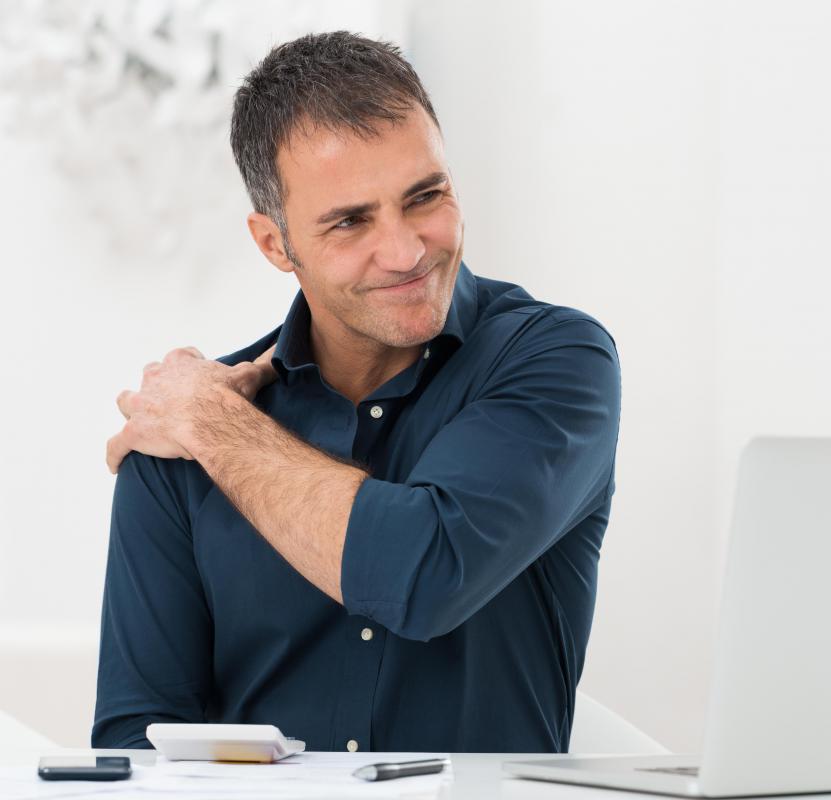At TheHealthBoard, we're committed to delivering accurate, trustworthy information. Our expert-authored content is rigorously fact-checked and sourced from credible authorities. Discover how we uphold the highest standards in providing you with reliable knowledge.
What Is a CA Ligament?
The CA ligament is a triangular band of fibrous connective tissue called the coracoacromial ligament. It provides support for the acromioclavicular (AC) joint and the glenohumeral (GHL) joint. A CA ligament can be felt during a physical examination by gently pressing on the deltoid muscle in the upper arm and shoulder. It supplies a buffer for the friction created during the movement of the rotator cuff and acromion, which is the highest point on the shoulder blade.
This ligament is divided into two sections. One section is called the anterolateral band, which refers to the front and side of the ligament. The other is the posteromedial band, which describes the back and middle portion of the ligament. It attaches to the acromion at the front and underside of the bone, and continues to the lateral edge of the structure. The ligament connects with the coracohumeral (CH), coracoclavicular (CC) ligaments, and the inferior capsular ligament of the acromioclavicular (AC) joint.

Also included in the structure of the CA ligament is what is known as the coracoacromial veil. It is an L-shaped thin layer of connective tissue. The veil prevents the movement of the glenohumeral joint during actions that may cause the inferior translation of the joint.
Along with the coracoid process and the acromion, the CA ligament helps to form a protective cushion for the head of the humerus in the glenohumeral joint. Together with the coracoclavicular and the acromioclavicular ligaments, it supports the AC joint when moving the arm up above the head. The CA ligament also helps to stabilize the movements of the glenohumeral joint, by restricting movements that could cause the superior translation of the joint

As a person ages, the amount of fat deposits containing nerves and blood vessels increases between the fiber bundles within the ligament. Due to the compression and tension on the ligament throughout a lifetime, it develops a thicker fibrocartilage and the functionality of the ligament is impaired. The friction increases within the AC and GHL joints during movement. This can cause spurs to develop, resulting in pain during the movement of the arm and shoulder.

Surgical alteration of the coracoacromial ligament can relieve some joint pain. A surgeon may release the tension on the CA ligament to enable a tight glenohumeral joint to move with greater flexibility. Too much stretchiness in the CA ligament may cause the shoulder joint to be unstable. Surgically increasing the tension on the CA ligament can help provide support for the joint during movement, and decrease the painful sensations caused by an unstable joint.
AS FEATURED ON:
AS FEATURED ON:














Discuss this Article
Post your comments